2025-11-15 04:00:58

Enjoy the latest episodes from MacStories’ family of podcasts:
Matt has a mouse that looks like a zebra, Niléane quotes some cool new stuff in the Mastodon world, and everyone pitches their dream app. (One of them may already exist!)
On Cozy Zone, the gang roasts their very lovely listeners’ desk setups.
This week in a special early release of NPC, the guys dig into Valve’s announcement of the Steam Machine, Steam Frame, and Stream Controller, a trio of SteamOS devices poised to make a big splash in 2026.
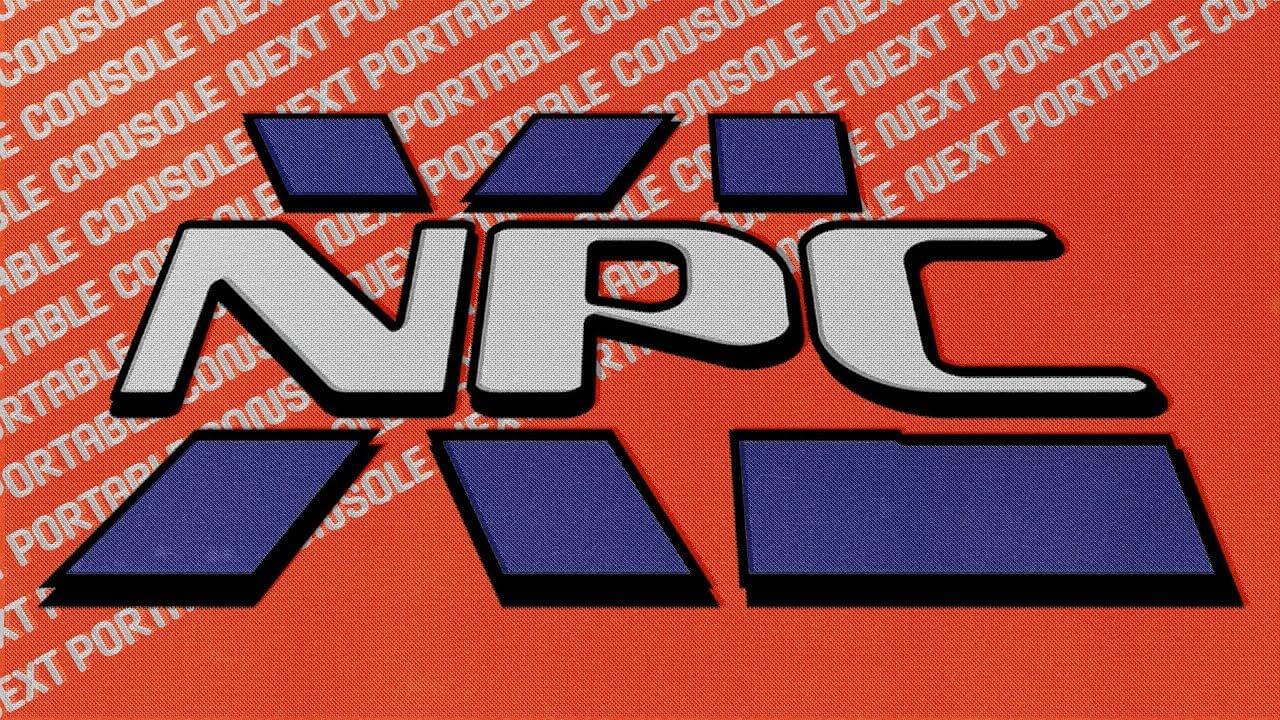
On NPC XL, Federico, John, and Brendon cover the Steam Frame but are mostly excited about it means for Windows gaming on ARM.
This week, John shares how he plans weekend activities with Instagram and Apple Maps, Federico tests dictation apps, and both share their first impressions of the new Apple TV show Pluribus.
Sigmund and Devon highlight Apple Original documentary Come See Me in the Good Light and return to Palm Beach for the second season of Palm Royale. Then, they discuss changes coming to profiles in tvOS 26.2.
For even more from the Comfort Zone crew, you can subscribe to Cozy Zone. Cozy Zone is a weekly bonus episode of Comfort Zone where Matt, Niléane, and Chris invite listeners to join them in the Cozy Zone where they’ll cover extra topics, invent wilder challenges and games, and share all their great (and not so great) takes on tech. You can subscribe to Cozy Zone for $5 per month here or $50 per year here.
NPC XL is a weekly members-only version of NPC with extra content, available exclusively through our new Patreon for $5/month.
Each week on NPC XL, Federico, Brendon, and John record a special segment or deep dive about a particular topic that is released alongside the “regular” NPC episodes.
You can subscribe here.
We deliver MacStories Unwind+ to Club MacStories subscribers ad-free with high bitrate audio every week.
To learn more about the benefits of a Club MacStories subscription, visit our Plans page.
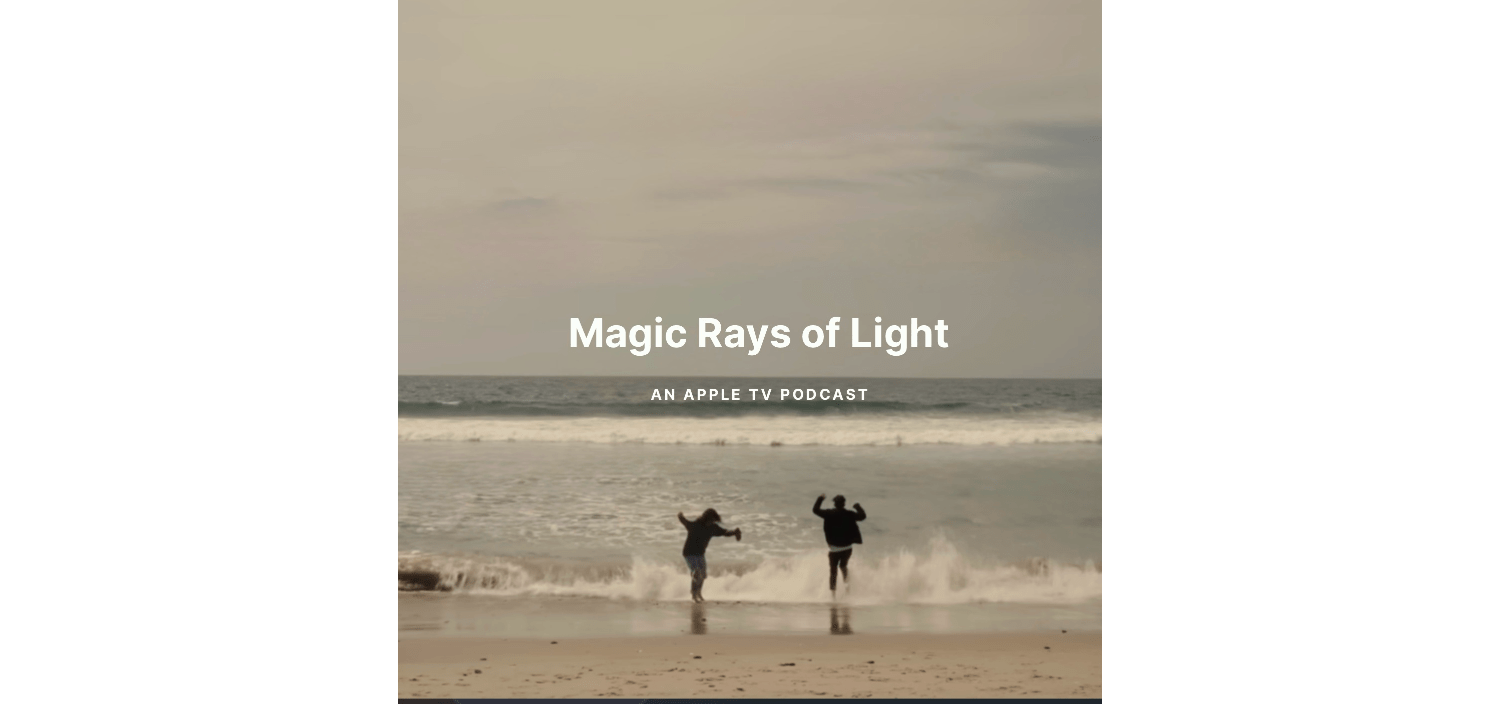
MacStories launched its first podcast in 2017 with AppStories. Since then, the lineup has expanded to include a family of weekly shows that also includes MacStories Unwind, Magic Rays of Light, Comfort Zone, NPC: Next Portable Console, and First, Last, Everything that collectively, cover a broad range of the modern media world from Apple’s streaming service and videogame hardware to apps for a growing audience that appreciates our thoughtful, in-depth approach to media.
If you’re interested in advertising on our shows, you can learn more here or by contacting our Managing Editor, John Voorhees.
2025-11-14 02:06:24
Today on its news site for developers, Apple announced a new Mini Apps Partner Program for the App Store. The announcement is brief but backed by a more detailed explanation about the eligibility requirements. Here’s how it works.
As Apple explains, mini apps are “self-contained experiences that are built using web technologies like HTML5 and JavaScript” that are hosted within a native app. That’s not something new. Companies like WeChat and Line have offered this sort of thing for a long time, and Apple has supported mini apps officially since 2017. What’s different is that now, developers who meet Apple’s eligibility requirements can offer those mini apps at a reduced commission. That means for any mini app not made by the developer of the native app that hosts them, the hosting developer will pay Apple a flat 15% commission.
To be eligible for the program, developers must ensure that the mini apps they host support certain APIs, including the Declared Age Range API and the Advanced Commerce API, the In-App Purchase system, and the Send Consumption Information endpoint that enables the processing of refunds. In other words, native app developers who do the work to ensure that mini apps meet the program requirements will pay Apple a reduced commission on mini app sales in return.
If you’re wondering what constitutes a mini app, Apple has provided some examples. Mini apps are “software packages, scripts, or game content that are added after app installation and executed on the device, provided such code is written in HTML5 or JavaScript, or another language approved by Apple”, such as mini games, streaming games, chatbots, plug-ins, and game emulators. As I mentioned above, it’s also important to keep in mind that mini apps are apps that are not controlled by the developer of the native app that hosts them.
Also, to participate in the Mini App Partner program, developers must apply – that link takes you to a form requesting information about the mini apps a developer wants to offer, so eligibility can be determined.
App Store users stand to benefit from the program, too. APIs like the Declared Age Rating API will help ensure that only age-appropriate mini apps are available to kids. Plus, by supporting the Advanced Commerce API, mini apps will include more metadata, providing users with a richer experience in places like their App Store purchase history.
Mini apps based on web technologies are a growing part of the App Store. The App Review Guidelines have accounted for mini apps since 2017 and the rules around them have continued to adapt to the market ever since. The Mini App Partner Program reflects the further evolution of the category, promoting privacy and transparency for users, while offering the carrot of lower commissions to developers.
What will be interesting to watch is the extent to which developers sign up for this new program. The program isn’t required (although compliance with App Review Guideline 4.7 still applies), so it will come down to whether the reduced commission provides sufficient incentive for developers to further police the mini apps they host.
2025-11-13 08:32:13
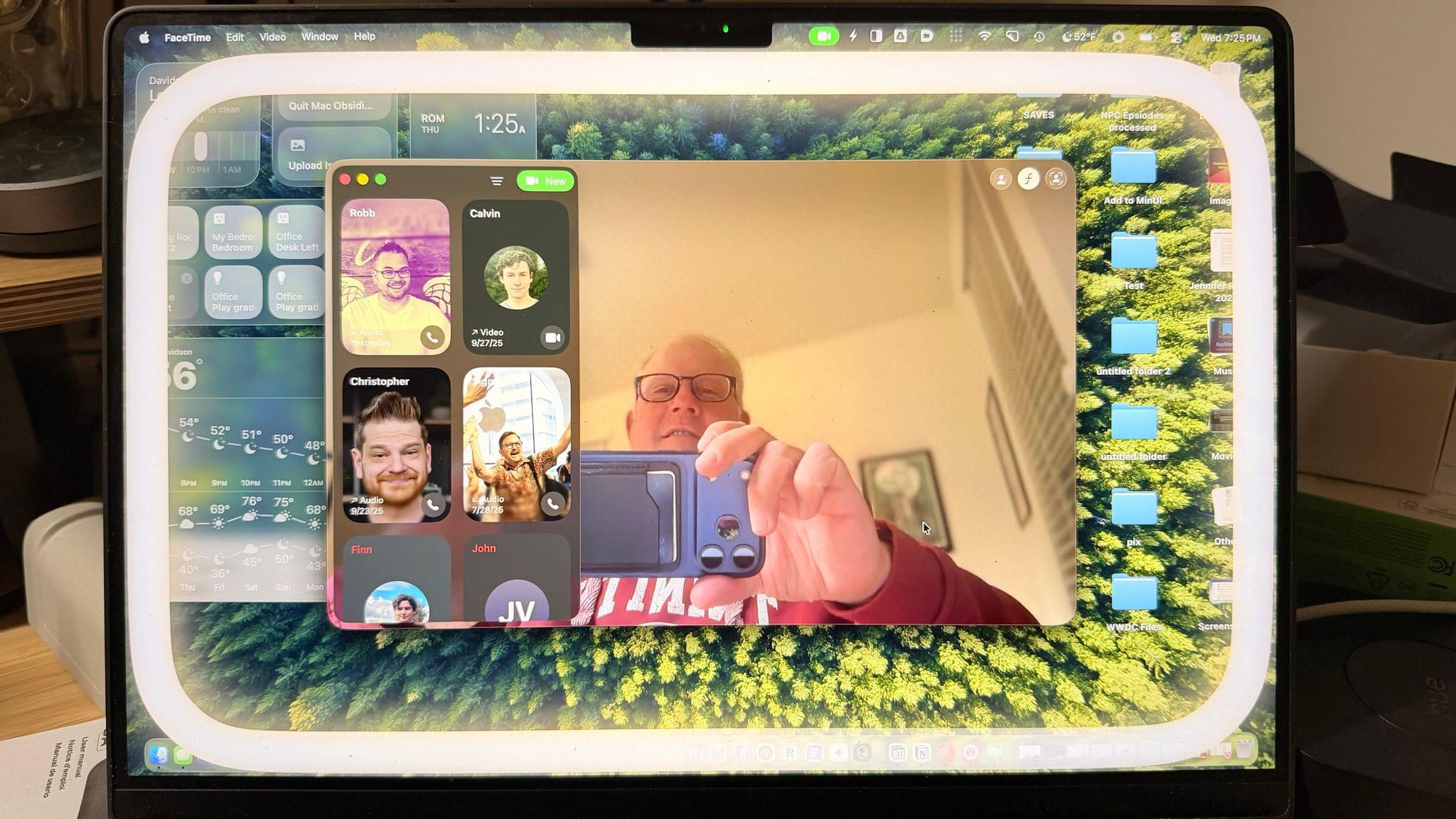
Edge Light doesn’t show up in screenshots.
The latest macOS Tahoe beta 26.2 includes a new video-calling feature called Edge Light, coming to Apple silicon Macs later this year. It’s a video effect that you can access from the menu bar, just like Backgrounds, Center Stage, and Portrait mode, that creates a virtual ring light on your Mac’s screen, helping to light your face on FaceTime, Zoom, and other video calls as the days grow shorter.
The idea is simple, and the implementation is clever. When you enable Edge Light, the outer edge of your Desktop is replaced with a bright, adjustable border. The brightness of Edge Light is adjustable, as is its color temperature, allowing for a range from warmer to cooler colors, just like many physical LED lights designed specifically for video production. The virtual ring light sits on top of your Desktop and windows, but it fades away as your pointer approaches, allowing you to see everything on your screen.

Edge Light’s brightness, temperature, and other controls, including the Automatic option available on Macs released in 2024 and after.
Edge Light is made possible by Apple silicon, using a combination of the Mac’s Neural Engine, which detects your face, and the Image Signal Processor, which measures and adjusts Edge Light’s brightness based on surrounding lighting. Edge Light will work on all Apple silicon Macs when Tahoe 26.2 is released, but Mac models released in 2024 or later will also have the option to turn the feature on automatically when low light is detected.
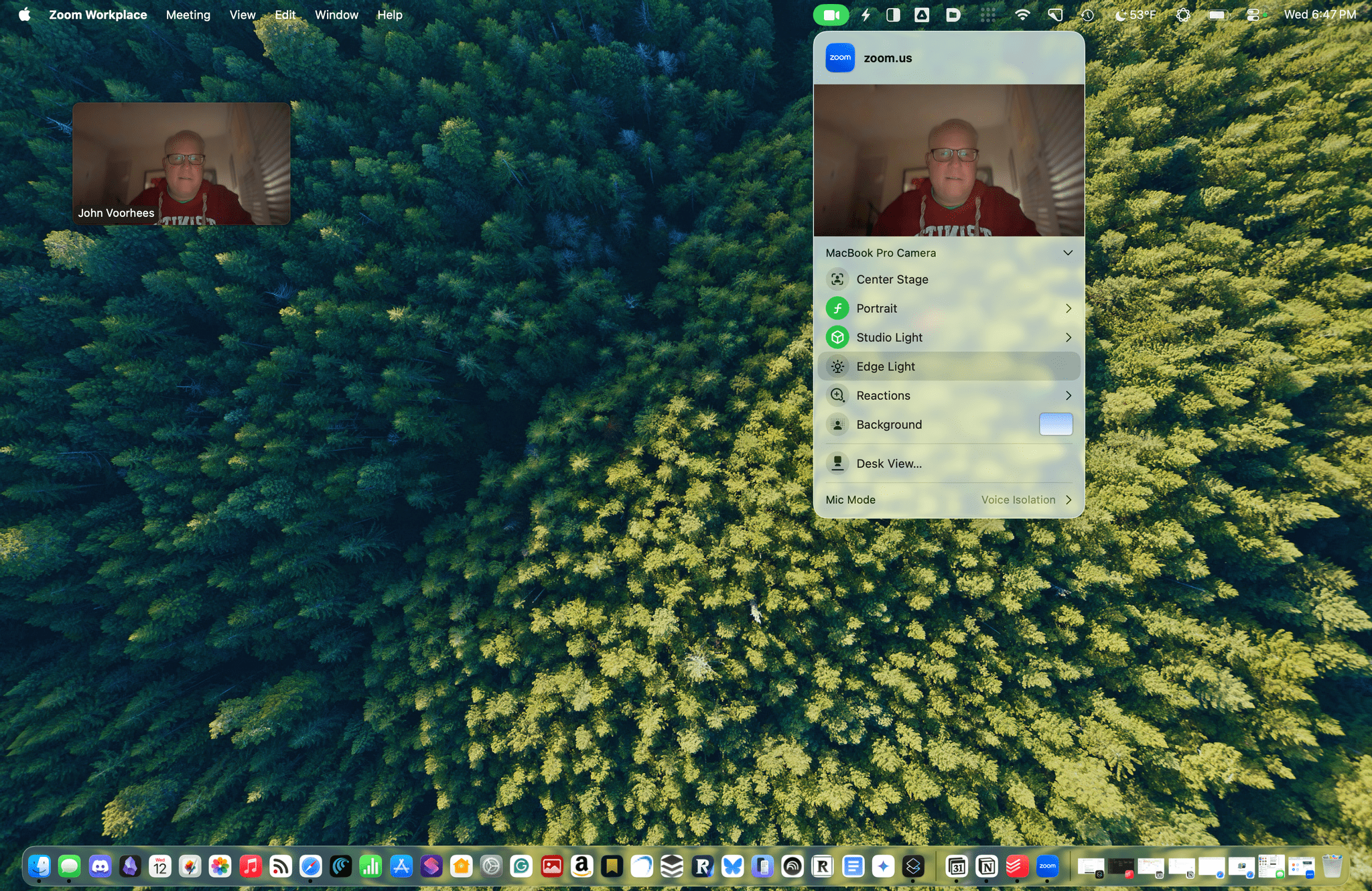
Edge Light off. Note, Edge Light isn’t captured in screenshots.
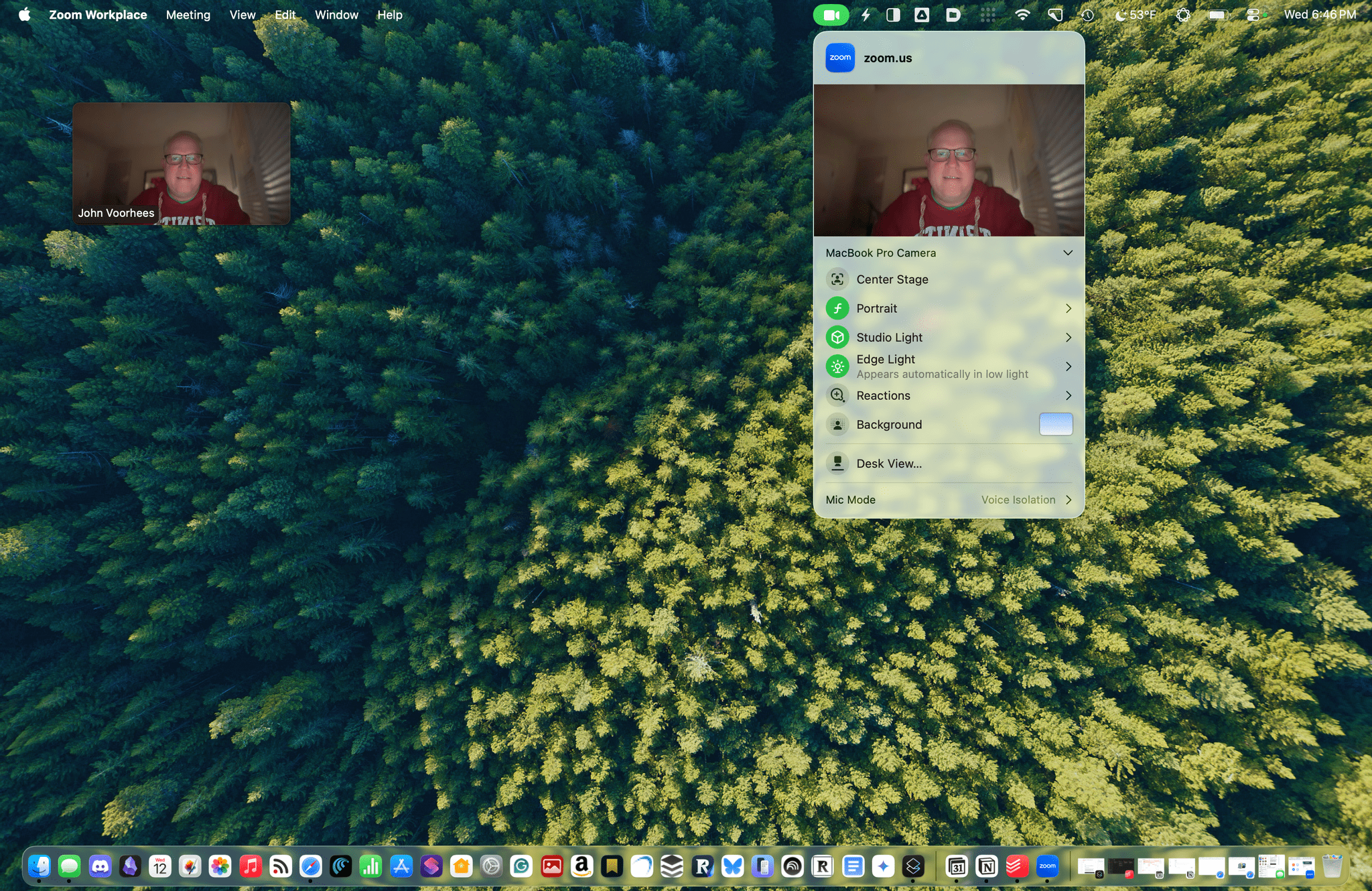
Edge Light on. Note, Edge Light isn’t captured in screenshots.
In my brief testing of Edge Light, I noticed that the effect is noticeable in a very dim room, but as you’d expect, less so as the room brightens. I also noticed that Edge Light was brighter when set to turn on automatically rather than manually, even though switching between the two didn’t move the brightness slider. I’m not sure what’s going on there, but it’s a beta, so that may change. I also enjoyed how the virtual ring light widened as I increased the brightness.
I have a couple of lights set up along the back edge of my desk because we record video for our podcasts, but most people don’t have that setup. For them, Edge Light will be a nice addition, reducing those early-morning and late-afternoon shadows. And despite the lights I have installed, sometimes it’s just easier to turn on something like Edge Light, so I expect to get use out of it too, whether I’m away from my desk on a laptop or sitting at my desk.
We’ll have more macOS Tahoe 26.2 coverage when it and Apple’s other 26.2 releases exit beta.
2025-11-12 05:07:03
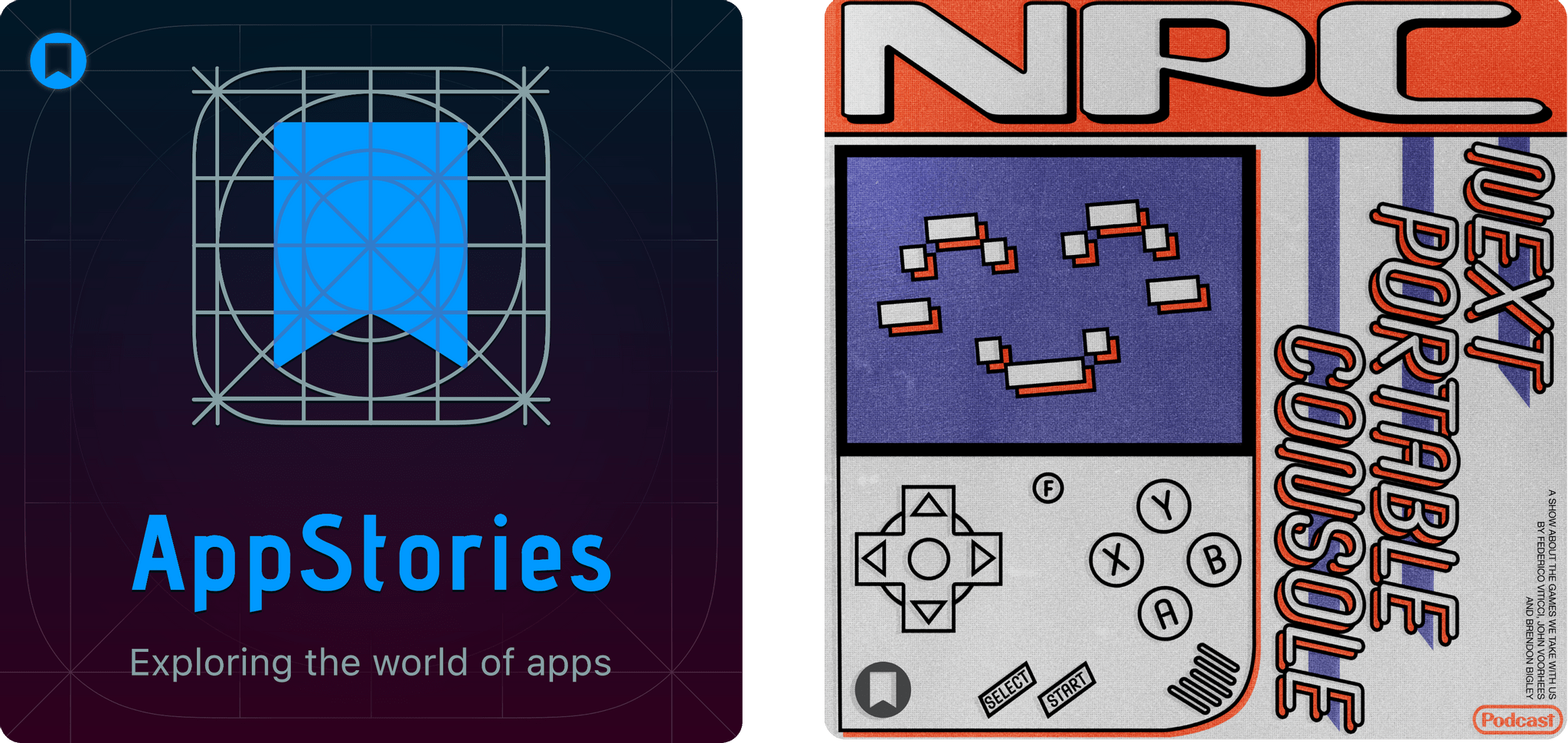
Enjoy the latest episodes from MacStories’ family of podcasts:
This week, John and Federico spin a Saturday morning of iPhone app cleanup into a full blown digital declutter across all devices with the help of some of their favorite apps.
Then on AppStories+, Federico has more to share from his ongoing Typing Mind experiments, and John explains how he’s using Claude Code to crunch spreadsheets with one million rows.
This week on NPC, Brendon, Federico, and John explore where mobile phone gaming is heading and reflect on what Nintendo’s latest earnings report means for the Switch 2, before Brendon shares his first impressions of the Miyoo Mini Flip

On NPC XL, Federico, John, and Brendon explore what’s behind the sudden surge of innovation in mobile phone controllers and where mobile gaming may be heading.
Visit AppStories.net to learn more about the extended, high bitrate audio version of AppStories that is delivered early each week and subscribe.
NPC XL is a weekly members-only version of NPC with extra content, available exclusively through our new Patreon for $5/month.
Each week on NPC XL, Federico, Brendon, and John record a special segment or deep dive about a particular topic that is released alongside the “regular” NPC episodes.
You can subscribe here.
MacStories launched its first podcast in 2017 with AppStories. Since then, the lineup has expanded to include a family of weekly shows that also includes MacStories Unwind, Magic Rays of Light, Comfort Zone, NPC: Next Portable Console, and First, Last, Everything that collectively, cover a broad range of the modern media world from Apple’s streaming service and videogame hardware to apps for a growing audience that appreciates our thoughtful, in-depth approach to media.
If you’re interested in advertising on our shows, you can learn more here or by contacting our Managing Editor, John Voorhees.
2025-11-11 23:58:51
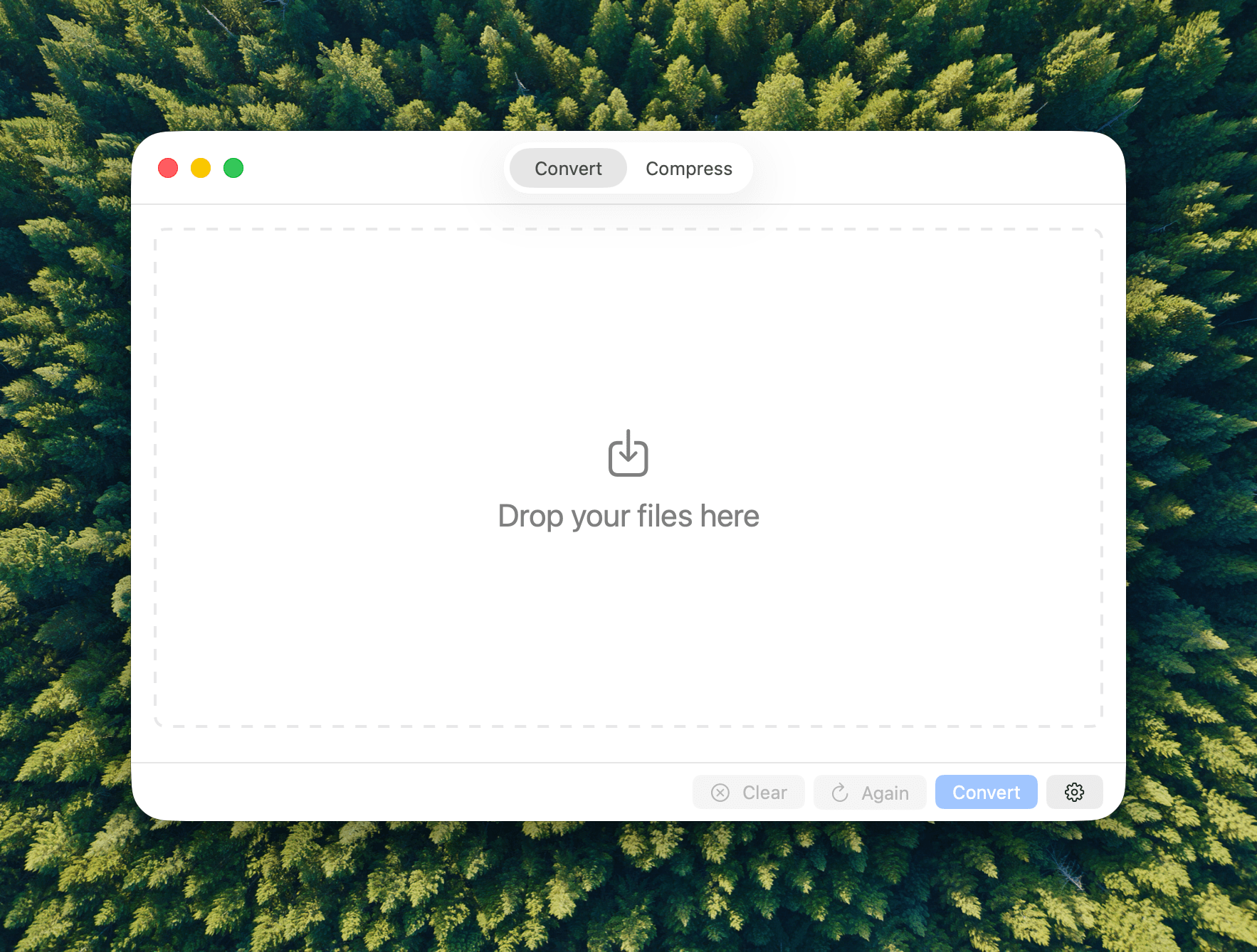
One of my favorite aspects of macOS is the endless supply of great utilities for doing anything you can imagine. If there’s something you want to do on your Mac, the chances are that there isn’t just one good utility to accomplish your task; there are several.
My latest discovery is a file conversion and compression app called Picmal. The app has a wonderfully simple, modern interface that sits on top of a lot of complexity, enabling batch conversion and compression with minimal effort.

You can mix and match file types in one conversion or compression operation.
Picmal handles images, videos, and audio files in a single-window utility that features a Convert/Compress toggle at the top and a lot of empty space to start. The center of the window invites users to “Drop Your Files Here.” Once you do, the window animates into something a little closer to a Finder window with alternating white and light gray rows that make it simple to track metadata about each file.
Files can be dragged into Picmal from anywhere on your Mac, allowing for batch processing without moving your files to one location first, which I appreciate. Once converted, files are saved as new files in the folder they came from with a prefix or suffix that you can specify in the app’s Settings. You’re not limited by file type either. You can drag any combination of images, videos, and audio files into Picmal’s window, picking and choosing what to convert them into as you go.

For some file types, Picmal includes metadata.
Next to some file types is a small info button that reports the sort of basic file metadata you find in the Finder’s info panel. That’s followed by a column that lists the file’s starting type, and a column with a dropdown menu for picking the destination file type. The list of supported file types is long, too, with the exact number of options dependent on the type you begin with.
If you want to check the file you’re about to convert before doing so, there’s also an arrow button on the far right of each file’s row that will take you to it in the Finder. The other columns report the output file’s size, any compression savings, and the status of each conversion. Whenever you want, you can add more files for conversion, kicking off a new batch once any ongoing conversions complete.

Most file conversions I tried went well, but I couldn’t manage to convert large MP4s to the MOV format.
In my testing, Picmal performed well overall. I converted images, audio, and videos to and from a variety of common formats such as PNG, JPEG, PDF, MP3, AAC, WAV, MP4, and MOV. However, I did run into trouble trying to convert a 1.55 GB MP4 of an episode of MacStories Unwind from MP4 to MOV. The conversion failed, even though much smaller files worked. Hopefully this is something that can be fixed in an upcoming update.
Another smaller issue I ran into is that there’s a checkbox next to each file in the Picmal file conversion interface that appears to be intended as a way to change the conversion file type for multiple files at once. However, the dropdown that appears when selecting multiple files of the same type didn’t give me an option to pick a new conversion type. The developer is aware of this and the large video file issue and is working to resolve both.
The other primary use for Picmal is file compression. The workflow is largely the same as converting files, with the size savings reported in a dedicated window column. By default, compressing files requires you to click on Picmal’s Compress button, but you can change the process so that it happens automatically instead. From Settings, you can also add compression to your file conversions, completing both steps together.

Compressing images.
Audio and video compression quality are set to 85% by default, while image compression quality is set to ‘balanced.’ However, in each case, you can tweak the compression settings with more fine-grained controls. Another nice touch is that your compression selections and a link to Picmal’s Settings are both accessible from the bottom of the Picmal window, making your compression choices clear and simplifying the process of making any adjustments.
Aside from a couple of hiccups in my testing that the developer will likely have fixed soon, my experience with Picmal has been great. About the only thing I’d love to see added is support for Shortcuts. Otherwise, Picmal is an excellent way to manage file conversion and compression jobs of any size. There are other apps that accomplish something similar, but the simplicity and speed with which you can manage batch conversion and compression with Picmal sets it apart and makes it worth checking out.
Picmal is available directly from its developer for $9.99. That gets you the use of the app on one Mac at a time, which can be expanded to more Macs at an increasing per-Mac discount based on the number of licenses you purchase.
2025-11-11 19:41:31

Source: Apple.
Apple has announced a new limited-edition iPhone accessory, the iPhone Pocket, created in collaboration with design brand ISSEY MIYAKE. Here’s how Apple describes the accessory, which will be available in select Apple Stores and online beginning Friday:
iPhone Pocket features a ribbed open structure with the qualities of the original pleats by ISSEY MIYAKE. Born from the idea of creating an additional pocket, its understated design fully encloses iPhone, expanding to fit more of a user’s everyday items. When stretched, the open textile subtly reveals its contents and allows users to peek at their iPhone display. iPhone Pocket can be worn in a variety of ways — handheld, tied onto bags, or worn directly on the body. Featuring a playful color palette, the short strap design is available in eight colors, and the long strap design in three colors.

The short version of the iPhone Pocket comes in eight colors, the longer strap version, just three. Source: Apple.
The iPhone Pocket comes in two styles. A short strap version will be available in eight colors: lemon, mandarin, purple, pink, peacock, sapphire, cinnamon, and black, while the longer strap model, which is long enough to wear like Apple’s Crossbody Strap, is limited to sapphire, cinnamon, and black.
The iPhone Pocket will be available starting Friday, November 14, for $149.95 for the short strap version and $229.95 for the long strap version from Apple’s online store and ten retail stores worldwide:

Echos of the iPod Socks. Source: Apple.
The iPhone Pocket makes a bold design statement that Apple says was “[i]nspired by the concept of ‘a piece of cloth.’” I’m not going to venture to guess what that means. Still, the Pocket fits neatly into few Apple knit products that came before it echoing the thick ribbing of both the Vision Pro Solo and Dual Knit Bands and the iPod Socks, a comparison that is inevitable though left unstated in Apple’s press release.
Apple’s connection with ISSEY MIYAKE goes back further, though. It was Miyake who designed Steve Jobs’ signature black turtleneck, according to Walter Isaacson’s biography of Jobs. Now, all these years later, your iPhone can have a turtleneck of sorts for itself, too.

Apple accessories have always been about fashion. Source: Apple.
Fashion is nothing new to Apple accessories, but the company’s emphasis on it has ebbed and flowed over the years. However, with the fashion-forward iPhone Air in its lineup and rumors of folding iPhones coming as soon as next year, it’s not surprising that Apple is fanning the fashion flames. Some may see the Air as an iPhone that costs more but does less, but a big part of its appeal is its striking profile, for which others are willing to pay a premium. The iPhone Pocket fits that narrative perfectly.